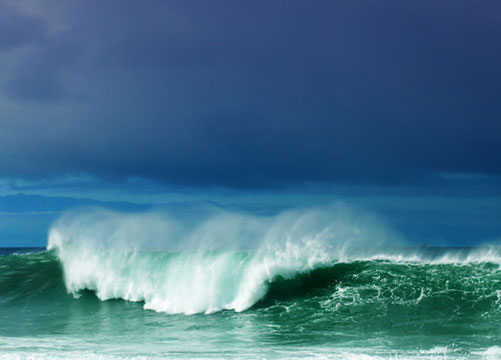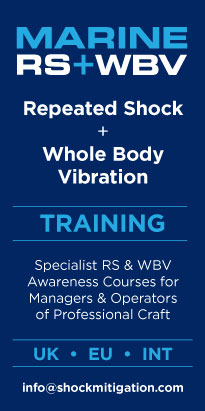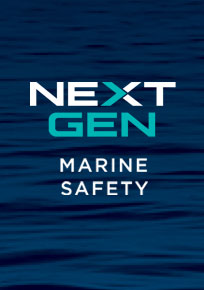Shock Mitigation Strategy
An effective Shock Mitigation strategy brings together subject matter expertise to increase efficiency for professional maritime organisations. A shock mitigation strategy is essential for all craft that undertake open sea transits or operate in rough water. The definition of Shock Mitigation is, "to make a violent collision or impact less intense".
Repetitive Shock (RS) & Whole Body Vibration (WBV)
Causes of 'shock' are random 'hits' of up to 15G from head sea impacts or from overtaking following seas. A single event can result in a sudden chronic injury. Causes of 'vibration' are continuous 'hammering' such as short steep seas or wind against tide conditions. Extended exposure can result in muscle fatigue and injury.
Technical Factors
Professional marine organisations require specialist boats and equipment that can be used night and day by operators in extreme conditions. Recent EU and US military High Speed Craft tenders require manufacturers to measure boat decks and seating to monitor vibration levels that may affect the occupants health.
Human Factors
Professional maritime organisations are now aware that operational expectations may exceed human limitations. High levels of fitness and stamina are simply not enough. Realistic risk assessments plus an effective shock mitigation strategy result in improved safety for individuals and add to the overall efficiency of an organisation.
Combined Shock Mitigation Solutions
Combined solutions include new hull forms, efficient work stations, suspension seating and training. With an effective shock mitigation strategy the helmsman, crew and passengers benefit from increased comfort and reduced injury. Plus organisations can increase sea time for on-water assets and cover greater distances at higher speeds.
For further information contact info@shockmitigation.com
Improvements & Upgrades
Professional fast boat operations include being on the water for extended periods and in extreme conditions which can result in injuries to crews and passengers. The objective of changing operating methods, equipment upgrades or specifying alternative hull designs is to improve an organisations overall performance.
Biomechanics & Ergonomics
Biomechanics is the study of the mechanics of the human body, especially the forces exerted by muscles and gravity on the skeletal structure. Ergonomics is the study of how a workplace and the equipment used there can best be designed for comfort, safety, efficiency and productivity.
The Human Body
Crew and passengers need to be aware of how the body’s own suspension system reacts to boat movements in various sea states. Effective seating and handholds are essential on fast boats plus the crew and passengers need to understand the benefits of maintaining good posture whether sitting or standing.
Work Station Layouts
A shock mitigation strategy includes the Man Machine Interface (MMI). This relates to how operators perform onboard tasks and how their positions alter as conditions change. Badly planned equipment layouts or inefficient work station ergonomics can lead to biomechanical problems that result in injury to the human body.
Shock Mitigation Strategy
A high incidence of injuries to personnel can affect the overall performance of an organisation. Injuries to back, knee, hip and neck are typical on high speed craft. There is no 'one off' solution to the demands of fast boats and extended periods at sea but an effective shock mitigation strategy can significantly benefit all operations.












